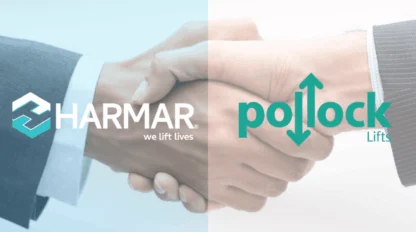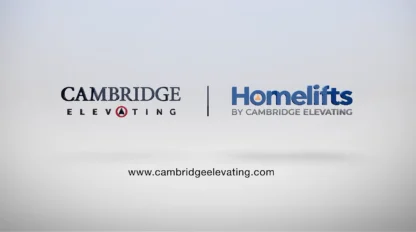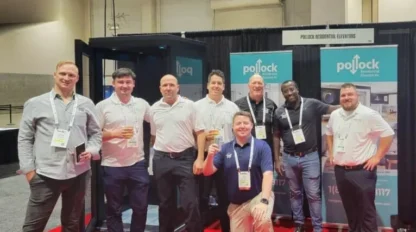Top Five Myths About Elevators
June 27, 2025
Residential elevators can be intimidating in many ways – they’re considered to be a massive undertaking with their installation, price tag, and maintenance. While they might be a little more of a commitment than a stairlift or ramp, the above are only myths. Elevators don’t have to be bulky or require major construction in the home. Read on for our top five residential elevator myths (and their facts!).

Myth One: Residential Elevators Are Too Expensive
Fact: While home elevators can come with a bit of sticker shock, after just one year in assisted living or a nursing home, they can save you money. The cost of an installed residential elevator can range from $30K-$50K, whereas the average annual cost of assisted living is about $70,800. Elevators can also increase the value of your home, making them not only a money-saver while staying home, but also a more profitable home access solution.
Myth Two: Home Elevators Require Major Construction
Fact: Depending on the type of home elevator, minimal work is required to retrofit an elevator. For example, a shaftless elevator, like the Pollock Homelift, needs an aperture in order for it to run between floors, but it doesn’t use major machinery that would require greater modifications (of even a room to house the machinery). Because of their sleek, minimalistic design, Pollock elevators can be placed near the stairs, in a corner of a room, in a closet – the two rails sit behind the cabin, close to the wall, so when the cabin is parked on the other floor, there is still ample amount of living space.
Myth Three: Residential Elevators Are Eyesores in the Home
Fact: Not true! Residential elevators can be customized to better suit your home décor. Some manufacturers offer multiple exterior cabin colors, customizable floors, and mood lighting inside the cabin. This way, your home elevator can be a sleek addition to your home, not an eyesore.
Myth Four: Home Elevators Are Only for People with Disabilities
Fact: Home elevators are for anyone who needs or wants one to more easily, safely, and comfortably travel from floor to floor. While they are an optimal home access solution for those with mobility challenges, they are also designed to help transport heavier, bulky items that might make stairs unsafe obstacles such as laundry, luggage, and groceries. Because most residential elevators are compatible with call/send buttons, homeowners can operate the cabin without being inside. Home elevators can also be fantastic, long-term solutions for those who wish to age in place. Should any potential health issues arise, elevators can accommodate the addition of canes, walkers, scooters, wheelchairs, and powerchairs.
Myth Five: Residential Elevators Aren’t Safe
Fact: Nope! Home elevators – when installed properly, used as instructed, and maintained routinely – are safe solutions for all users. They are built to very strict safety standards, which include emergency stop features, battery backups, and door interlocks. Speaking pf battery backups, in the event of a power outage, most residential elevators offer battery backups in case power goes out. This way, you can still safely enjoy your home until the lights are back on.
To learn more about residential elevators, visit our Elevator Buyers Guide!
Interested in Becoming a Distributor?
If you are looking to expand your product offerings or trying to reach a new market, then the Pollock Residential Elevator could be perfect for you. Reach out to our team to learn more.


